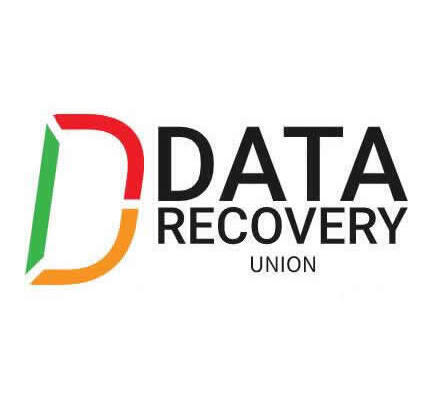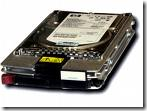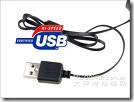
Hard Disk Repair
Hard Disk Repair, hd repair, hdd repair, Hard Disk Repair Technologies


What are the main features of EIDE?
These are the main features:
- Faster transfer modes- PIO modes 3-4, DMA mode 2 and UDMA.
- Multiple Read/Write commands LBA mode, translation for drives larger than 504 MB
- Four devices on the ATA controller (secondary port)
- CD ROM and Tape Drive support

Terminating the SCSI Bus
 What is Termination?
What is Termination?
Cables make up the physical connections of the SCSI bus. Since the SCSI bus is a chain of devices on a cable rather than a loop, the two ends of the bus must be terminated. Every wire in the cable has a specific impedance, or resistance to the passing of electrical signals. When signals reach the end of the cable that makes up the SCSI bus, they encounter the air, which has very high impedance and acts as a wall of infinite resistance. The problem with high impedance is that any signal coming down the bus is reflected back in the other direction once it hits this barrier. Terminating both ends of the cable prevents the signal from being reflected.
You terminate the bus by attaching a circuit, the terminator, to the physical ends of the SCSI bus. The terminator provides an impedance that matches the cable’s, thereby preventing the signal from bouncing back. The terminators use power, and the power to operate them comes from the SCSI interface card through the termination power wire on the bus.
What is Passive Termination?
Passive Termination is the oldest method of termination, defined in the specs for SCSI-1. Basically, a passive terminator sits on the bus to minimize reflections at the end of the cable. The terminator doesn’t really do any work to regulate power for termination; it relies on the interface card to provide steady power. A passive terminator simply provides impedance that’s close to the impedance of the cable.
What is Active Termination?
Active termination works to control the impedance at the end of the SCSI bus by using a voltage regulator, not just the power supplied by the interface card. Because it is active, regulating the power that it gets from the interface card, active termination is more stable than passive termination.
What is Forced Perfect Termination (FPT)?
Forced perfect termination is the most complex of the terminators, going beyond merely stabilizing the power applied to the terminator. It can actually alter its impedance to compensate for variations in impedance among many different cables, devices, and terminators. It is usually used in high-speed SCSI systems that have many different devices, cables, and terminator types. The complexity of such a system can cause impedance mismatches that degrade the signals sent through the bus. FPT actively compensates for these impedance variations by means of diode switching and biasing to force the impedance of the cable to match each device.
How do I terminate Seagate SCSI disc drive?
If you are installing a Seagate drive in a system that has other SCSI devices installed, terminate only the end devices on the SCSI chain. A SCSI “device” is any disc drive, scanner, tape backup unit, or other piece of hardware connected to your system using the SCSI bus.
The example above shows an internal hard disc at one end of the SCSI bus with the SCSI controller at the other end (both are terminated). The bottom example shows two additional SCSI devices connected externally-this means the SCSI controller is no longer on the end of the SCSI chain and should not be terminated.
Note: Some controllers prefer to remain terminated even if they are in the middle of the chain. Also, some controllers treat the internal and external chains as separate logical buses. This means you may need to terminate both the first and last devices on both logical buses to achieve proper termination. If necessary, refer to your system or controller documentation to see how this is handled in your particular system.

Serial ATA (SATA) data cable lengths
 Serial ATA cables are available in many lengths up to 1 meter. Minimum cable length is 12 inches, using shorter cables can cause timing, or noise interference on the cable. The same conditions apply to cables that are too long. Though the Serial ATA specification calls out supporting cable lengths up to 1 meter or 39.37 inches, PCB traces from the cable connection to the host and drive controllers ASIC, adds length to the bus.
Serial ATA cables are available in many lengths up to 1 meter. Minimum cable length is 12 inches, using shorter cables can cause timing, or noise interference on the cable. The same conditions apply to cables that are too long. Though the Serial ATA specification calls out supporting cable lengths up to 1 meter or 39.37 inches, PCB traces from the cable connection to the host and drive controllers ASIC, adds length to the bus.
Example: SATA drive installed with a 40 inch cable. PCB trace from Serial host connector to the serial hosts ASIC = 3 inches. The same 3 inch PCB trace applies to the hard disk. This configuration gives you a bus length of about 46 inches. If you are having performance or data corruption issues, try using a shorter cable or different manufacturer of cable. Cable quality can vary between vendors.

How to terminate A SCSI hard drive?
 With today’s high speed hard drives combined with long cable runs, only use high quality ‘twisted pair’ cable and external active (cable end) terminators. Active termination boosts data integrity and reliability. With active termination, a 110-ohm resistor on each signal line connects to a voltage regulator. The regulator ensures signal quality over the entire length of the SCSI bus. This reduces under and overshoot signals typically found on passive resistor termination schemes.
With today’s high speed hard drives combined with long cable runs, only use high quality ‘twisted pair’ cable and external active (cable end) terminators. Active termination boosts data integrity and reliability. With active termination, a 110-ohm resistor on each signal line connects to a voltage regulator. The regulator ensures signal quality over the entire length of the SCSI bus. This reduces under and overshoot signals typically found on passive resistor termination schemes.
Passive termination draws its electrical power from the SCSI host adapter. A 220/330-ohm resistor is used to provide the necessary impedance to prevent the data signal from ‘reflecting’ back. Fluctuations in termination power (or failing cables) can show up as error symptoms in the drive, yet do not originate there. In general we recommend you enable SCSI Termination Power if available.
- Maxtor (and Quantum) SCSI disk drives have either onboard active termination (jumpers). Older drives (circa 1994) enable active termination by two removable (10-pin) termination resistors. Some use passive termination with three removable (8-pin) terminating resistor packs. Seagate does not supply terminating resistor packs for older drives.
- SCSI Single Ended Hard drives using active onboard termination have a jumper setting labeled ‘TE’ to control the termination setting.
- All Quantum Single-Ended SCSI drives ship defaulted to provide SCSI Termination Enable.
- SCSI LVD(low voltage differential) drives do not supply SCSI Termination Enable. Refer to the drive configuration guides for proper setting of this feature.Notes:
- Some Quantum SCSI disk drives are available in both Single-Ended and LVD versions. Specifically, the Atlas III and Viking II drives offer both types of termination. Atlas III Narrow (50 pin) drives are Single-Ended, while the Wide (68 pin) and SCA (80 pin) versions are LVD models. Viking II Wide drives are available in both SE and LVD models. The part number for an SE drive will contain “W”, and the LVD will contain a “L” (e.g. PX09L011 would be LVD). All Viking II SCA drives are LVD models. All fifty pin Quantum SCSI drives are all SCSI Single-Ended.
- LVD cables and SCSI bus terminators can be purchased from TMC (The Mate Co.) or a local retailer.
- Use due diligence when installing or adding SCSI devices. Unlike most electronic devices, SCSI may operate if improperly terminated, but performance and reliability will be seriously at risk.

Volume Size Too Big Error During Windows XP Installation
 Why do I get a “Volume size too big” error message during the installation of Windows XP?
Why do I get a “Volume size too big” error message during the installation of Windows XP?
You cannot format a volume larger than 32 GBytes in size using the FAT32 file system during the Windows XP installation process. Windows XP can mount and support FAT32 volumes larger than 32 GB (subject to the other limits), but you cannot create a FAT32 volume larger than 32 GB by using the Format tool during Setup. If you need to format a volume that is larger than 32 GB, use the NTFS file system to format it. Another option is to start from a Microsoft Windows 98 or Microsoft Windows Me Startup disk and use the Format tool included on the disk.

Can I boot from my SCSI hard drive with an IDE/EIDE drive installed?
The system with a bootable hard drive on an IDE/ATA controller in most computer systems. Most new BIOS’ have a SCSI Boot Sequence (option) setting. Some combo SCSI/IDE cards will allow the reverse or some add-in secondary IDE cards will allow the SCSI to boot first.
You can see the motherboard’s reference manual or manufacturer’s website for options in the boot sequence.

External drive drops offline during data streaming
 Problem:
Problem:
External Drive Drops Offline During Streaming
Cause:
During video or other data streaming, the system may unexpectedly disconnect from the external drive, halting the data stream and requiring a reconnect, power cycle or a system restart to allow the drive to be available for use again.
Solution:
Disable System Restore (XP) and Indexing Service (2000 and XP) for the external drive.
Procedure(s)
Disabling System Restore (XP Only):
WARNING: ALL System Restore Points will be deleted when disabling this feature!
- Right-click on My Computer and left-click on Properties.
- Click the System Restore Tab
- Check the box that says, “Turn off System Restore on all drives”
- Click “Okay”
- It will warn you and ask if you really want to do this, Click “Yes”
Disabling the Indexing Service (XP and 2000):
- Open My Computer
- Right-click on the External Drive (whatever letter is assigned) and left-click on Properties.
- Choose the ‘General’ tab.
- Uncheck the Box that says: “Allow Indexing Service to index this disk for fast file searching.”
Additional Information:
Disk Indexing is a feature in Windows 2000 and XP that enables faster and more comprehensive file search functions. By default, Indexing occurs when the system is idle. After a period of inactivity the Indexing Service will resume the cataloguing of files on attached internal and external drives. A streaming operation (such as video) without user input is interpreted as such a period of inactivity and the Indexing Service will resume and begin accessing drives, sometimes causing the external unit to be unexpectedly disconnected from the system.
Other Links:
- Microsoft’s System Restore Overview
- Microsoft’s Overview of the Disk Indexing Service

Where is the serial number located on Quantum Bigfoot hard drive?
The serial numbers on a Quantum Bigfoot ATA hard drive can be found on a bar code label affixed to the bottom of the drive (opposite side from the green PC board). A “SN” will prefix the serial number. The Quantum serial number is a 12 digit number that immediately follows the “SN” prefix. In some cases the 12-digit serial number may be followed by a letter (this letter is not part of the serial number).

Troubleshoot USB in Windows 98 SE and Windows Me
 There is little that you can do to control or configure USB devices. You can usually isolate most USB problems to one of these conditions.
There is little that you can do to control or configure USB devices. You can usually isolate most USB problems to one of these conditions.
- Malfunctioning or incorrectly configured hardware
- Malfunctioning, incorrectly configured, or missing device driver
- Mismatched cabling
- Out-of-date firmware on motherboard or system’s basic input/output system (BIOS)
- Improperly configured PCI or imbedded USB host adapter
Malfunctioning or Incorrectly Configured Hardware If you plug a malfunctioning or incorrectly configured USB Storage Device into a USB port, the computer may stop responding (hang). Most of the time you need only physically turn off the computer, wait a moment, then back on to reset the bus. If another computer is available that you know is working correctly; plug the Personal Storage Device or PCI card into that computer to see if the problem follows or goes away.
- If the Maxtor Personal Storage Device is routed through a secondary USB hub, plug the drive directly into the embedded or PCI USB controller.
- Check Device Manager to be certain the USB hub is functioning correctly. If you see an exclamation point in a yellow circle, confirm system BIOS is assigning an interrupt request (IRQ) to the USB controller. This is required for the device driver to load.Malfunctioning, Incorrectly Configured, or Missing Device Driver
When you install a USB PCI card or plug in a Personal Storage Device, the computer should load and configure the device and never request a device driver. All the drivers you need are in the Windows CD. If the computer prompts you for a device driver, confirm that PCI/USB card or embedded USB controller is correctly listed in Device Manager.Mismatched Cabling There are two types of USB cables, high speed and low speed. Low-speed cables (USB1.0) differ from high-speed cables (USB2) primarily in signal shielding. If you plug a Maxtor USB2 Personal storage device or Maxtor USB2 PCI accessory using a low-speed cable, this can cause signal distortion. Verify the entire USB chain is working correctly. Be certain that a device that requires power from the hub (mouse or keyboard) is not plugged into the chain on the other side of a non-powered hub. If the USB port is powered (PCI or embedded chip-set), verify the computer power supply is working properly.
Incorrectly Configured Root Hub USB controllers require a dedicated IRQ (system interrupt) assignment. The PCI specification allows the motherboard manufacturer to determine the IRQ assignment for each PCI device. Usually IRQ 9 is assigned. The IRQ line is assigned in the computer’s BIOS. Check with the motherboard / computer manufacturer for the specific PCI configuration details of your system.
There are several ways to enter the setup depending on your computer make and model. Usually on initial power up there is a message stating Press DEL to enter Setup or similar phrase. If you are not sure how to enter setup, see the system manual or seek assistance from the BIOS or motherboard manufacturer.
Go to the Integrated Peripherals section and disable both Serial ports if you are not using them. Go to the PnP/PCI section and enable PnP OS, Auto and Reset Configuration Data. This releases the BIOS lock on system resources –allows operating system control. Go to the Power Management section. Disable all power management. This is a common source of intermittent errors.
Shut down the computer and unplug any USB devices. Re-start the computer and immediately enter Windows Safe Mode (F8 at start-up). DO NOT allow the computer to boot fully to the operating system. If this happens, press ctrl /alt /delete at the same time to restart the computer; re-enter Safe Mode. Go to Add/Remove Programs. Remove all references to USB software. Open Device Manager. Remove the USB root hub and any PCI USB host controllers. Remove all duplicate or erroneous USB drivers. Windows will reinstall genuine device drivers. If you see SB16 emulation drivers (DOS sound support), disable them (do not remove) from this hardware profile. Most don’t need them. While still in Safe Mode, go to System Devices and disable Advanced Power Management support. Remove any drivers for device sharing. Windows should reinstall the drivers automatically. Now you have freed up two or three IRQs and reset Windows IRQ assignments. Reboot the computer and re-install devices.
If this article does not describe your issue, click here to view the Microsoft Windows 98 and Windows Me Hardware/Device Driver Troubleshooting Resource Center.


